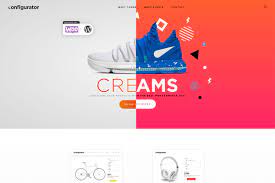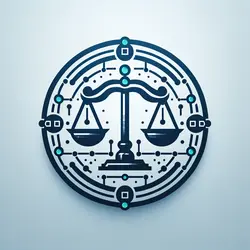
Unlocking the Secrets of Best Website Design: A Guide to Success
The Art of Best Website Design
Creating a website that not only looks visually appealing but also functions seamlessly is crucial in today’s digital age. The best website design goes beyond aesthetics; it encompasses usability, user experience, and brand identity.
User-Centric Design
One of the key principles of best website design is putting the user first. A user-centric design focuses on creating an intuitive and easy-to-navigate interface that ensures visitors can find what they need quickly and efficiently.
Responsive Layout
In a world where users access websites from various devices, having a responsive layout is essential. The best website design adapts to different screen sizes, ensuring a consistent experience across desktops, tablets, and mobile devices.
Clear Navigation
An intuitive navigation system is fundamental to the success of a website. Clear menu structures and well-organised content help users navigate through the site effortlessly, leading to higher engagement and conversion rates.
Visual Appeal
While functionality is paramount, visual appeal also plays a significant role in best website design. Thoughtful use of colours, typography, images, and whitespace can enhance the overall aesthetic and reflect the brand’s identity.
Optimised Performance
A well-designed website not only looks good but also performs well. Optimising loading times, minimising clutter, and ensuring smooth functionality contribute to a positive user experience and encourage visitors to stay on the site longer.
Consistent Branding
Consistency in branding elements such as logos, colours, and messaging reinforces brand identity and fosters trust with visitors. The best website design maintains brand coherence throughout every page to create a cohesive and memorable experience.
Conclusion
Best website design combines aesthetics with functionality to create an engaging user experience that reflects the brand’s values and goals. By prioritising user needs, embracing responsive layouts, ensuring clear navigation, focusing on visual appeal, optimising performance, and maintaining consistent branding, websites can truly stand out in today’s competitive online landscape.
Essential FAQs on Exceptional Website Design: Top Types, Best Practices, and Inspiring Examples
- What are the top 10 most popular types of websites?
- How do I best design a website?
- What are the 3 types of websites?
- What is the best website in 2022?
- What are the 7 steps to effective web design?
- What are the 5 elements to a good website design?
- What are some good web design examples?
- What website has the best design?
- What makes a good website design?
What are the top 10 most popular types of websites?
When it comes to the top 10 most popular types of websites, the digital landscape offers a diverse range of platforms catering to various needs and interests. E-commerce websites lead the pack, providing online shopping experiences for consumers worldwide. Social networking sites connect individuals globally, fostering communication and community building. Informational websites offer valuable content on a wide array of topics, from news and education to health and lifestyle. Blogs serve as personal platforms for individuals to share their thoughts and expertise. Additionally, business websites showcase products and services, while portfolio websites display creative work. Media-sharing sites allow users to upload and view multimedia content, while educational platforms offer online learning opportunities. Forums provide spaces for discussions and interactions among users, while review sites offer insights into products and services based on user feedback. These popular types of websites reflect the diverse needs and preferences of online users in today’s digital age.
How do I best design a website?
When it comes to designing a website, the key lies in prioritising user experience and functionality. To best design a website, start by understanding your target audience and their needs. Create a user-centric design that is intuitive to navigate and visually appealing. Utilise responsive layouts to ensure compatibility across various devices. Clear and concise navigation, along with well-organised content, can enhance usability. Pay attention to visual elements such as colours, typography, and imagery to reflect your brand identity. Optimise performance for fast loading times and smooth functionality. Consistent branding throughout the site reinforces brand identity and fosters trust with visitors. By focusing on these aspects, you can create a website that not only looks great but also delivers an exceptional user experience.
What are the 3 types of websites?
When it comes to website design, there are three main types of websites that serve different purposes and cater to varying needs. The first type is informational websites, which focus on providing content and information to visitors. These sites often include blogs, news platforms, or educational resources. The second type is e-commerce websites, designed for online shopping and transactions. E-commerce sites enable businesses to sell products or services directly to customers through a digital platform. The third type is interactive websites, which engage users through features like forums, social media integration, or interactive tools. Each type of website has its own design considerations and functionalities tailored to meet specific objectives and user expectations.
What is the best website in 2022?
When considering the question of the best website in 2022, it is important to acknowledge that the concept of “best” can vary greatly depending on individual preferences, needs, and industry standards. In the rapidly evolving digital landscape of 2022, what may be considered the best website for one user or business might not necessarily hold true for another. Factors such as design aesthetics, user experience, functionality, content relevance, and technological innovation all contribute to determining the effectiveness and success of a website. Ultimately, the best website in 2022 is one that effectively meets its intended goals and resonates with its target audience while staying current with emerging trends and technologies.
What are the 7 steps to effective web design?
Effective web design involves a systematic approach that encompasses various key steps to ensure a successful outcome. The 7 steps to effective web design typically include defining the website’s goals and target audience, planning the site structure and navigation, creating a visually appealing layout and design, developing relevant and engaging content, implementing responsive and user-friendly features, testing for usability and functionality, and finally, launching the website while continuously monitoring and refining its performance. By following these steps diligently, web designers can create websites that not only look great but also deliver exceptional user experiences tailored to meet the needs of both visitors and businesses alike.
What are the 5 elements to a good website design?
When it comes to achieving a good website design, there are five key elements that play a crucial role in creating a successful online presence. Firstly, user-centric design focuses on putting the user experience at the forefront, ensuring easy navigation and intuitive interactions. Secondly, a responsive layout ensures that the website adapts seamlessly to different devices and screen sizes. Clear and logical navigation is essential for guiding visitors through the site effectively. Visual appeal, including thoughtful use of colours, typography, and imagery, enhances the overall aesthetic and reinforces brand identity. Lastly, optimised performance factors such as fast loading times and smooth functionality contribute to a positive user experience. By incorporating these five elements into website design, businesses can create engaging and effective online platforms that resonate with their target audience.
What are some good web design examples?
When seeking inspiration for best website design, exploring good web design examples can provide valuable insights into effective strategies and aesthetics. Websites such as Apple, Airbnb, and Nike showcase sleek and user-friendly designs that prioritise simplicity, functionality, and visual appeal. These examples demonstrate the power of clean layouts, intuitive navigation, striking visuals, and strong brand identity in creating memorable online experiences. By studying successful web design examples, designers and businesses can learn from industry leaders and apply innovative techniques to elevate their own websites to new heights of excellence.
What website has the best design?
When it comes to determining which website has the best design, the answer is subjective and can vary depending on individual preferences and criteria. Many factors contribute to a well-designed website, including usability, aesthetics, functionality, and overall user experience. Some popular choices for websites with exceptional design include those known for their intuitive navigation, visually appealing layout, responsive design for various devices, and seamless integration of content. Ultimately, the best website design is one that effectively communicates its message, engages users, and reflects the brand’s identity in a cohesive and impactful manner.
What makes a good website design?
A good website design encompasses a combination of factors that collectively contribute to an exceptional user experience. From intuitive navigation and responsive layout to visually appealing aesthetics and optimised performance, the key elements of good website design work harmoniously to engage visitors, communicate brand identity effectively, and drive desired actions. Consistency in branding, clear messaging, and user-centric design principles also play a vital role in creating a website that not only looks great but also functions seamlessly across devices. Ultimately, a good website design is one that prioritises user needs, reflects the brand’s values cohesively, and delivers a memorable online experience for visitors.

